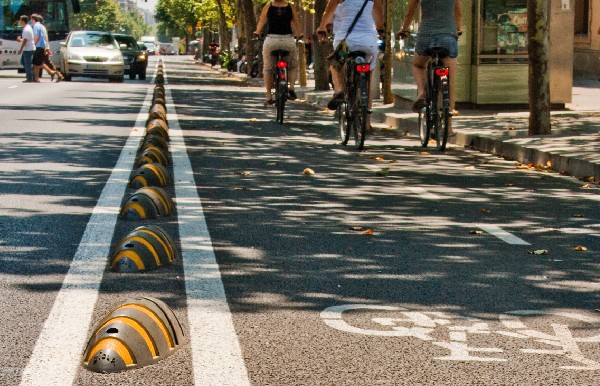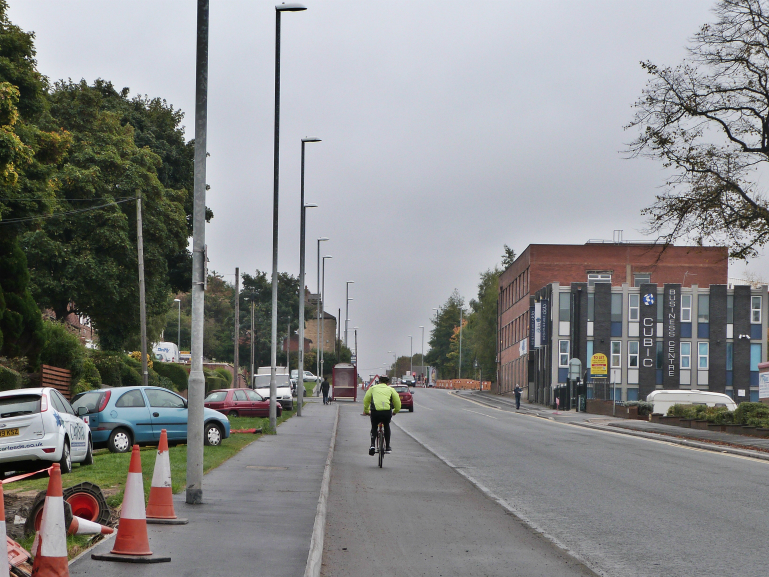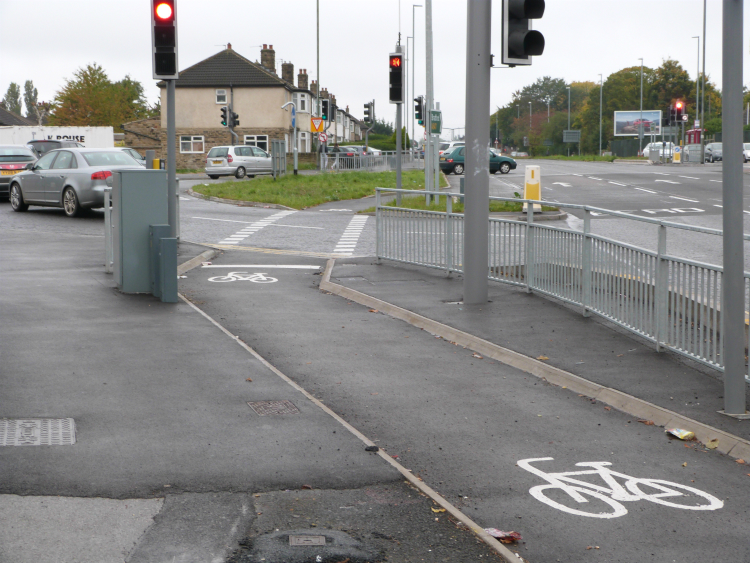HedgehogCycling.co.uk
Yorkshire cycling website

Cycling Embassy of Great Britain's design principles
14th March 2016

The Cycling Embassy of Great Britain (CEGB) website published draft design principles for mass cycling last month. The post by Mark Treasure, dated 25th February 2016, sets out how cycling can be made safe, comfortable, and convenient - particularly by minimising interactions with motor traffic. Mitigating hostile conditions through training, education, or changes to insurance law, is less important.
Intrinsic safety
CEGB suggest that a concept they call 'intrinsic safety', similar to the Dutch idea of Sustainable Safety, should underpin design for cycling. This means:
*single function roads: roads and streets should have a single function, and be classed as through, distributor, or access roads
*homogeneity: the mass, direction, and speed of travel on a road should be equalised as much as possible
*instantly recognisable road design: it should be clear what behaviour is expected on a road
*forgiving environments: the design on roads should limit the consequences of mistakes by users
Single function roads
A section on use of road and street space expands on the idea of single function roads. Through roads, carrying large volumes of traffic, should cater for cycling in its own right, rather than bodging it into pavements, or treating cycling like motor traffic. Distributor roads take traffic from through routes to access roads. Access roads give access to houses, schools, shops, and businesses. These access roads should be streets for people, with motor traffic reduced to a minimum (vehicles which need access).
Homogeneity, road design, and forgiving environments
CEGB suggest that local authorities be obliged to categorise roads as through, distributor, or access, then accommodate cycling according to the category of the road. There would be segregated infrastructure on through roads. Roads which currently fall into the 'distributor' category would either have traffic removed or reduced, so that they could move to the 'access' category, or they would be given segregated cycle infrastructure.
Thus the principle of homogeneity would be applied - meaning that because cycling is a low mass, low speed mode of transport, it should not share space with significant volumes of high-speed traffic.
The road types would be instantly recognisable, so that (particularly) drivers know would know what was expected of them. The road design would allow for human fallibility, so that mistakes wouldn't lead to tragic consequences.
Implentation
CEGB suggest that their ideas could be implemented by twin duties on local authorities. They would have to build appropriate cycle infrastructure when they resurface, re-engineer, or rebuild roads, and they would be obliged to have long-term plans to classify (as through, distributor, or access) and rebuild their highways network.
Quality of cycle routes
The draft design principles set out the quality requirements for cycle routes. They should be safe (essentially reducing interaction with motor traffic, and reducing speed differences where it does occur), comfortable (includes surface and width of routes, and not mixing cycling and walking), direct, attractive (for example, well-lit and well-maintained), and coherent (connecting people with the places they want to get to).
Comment
These are good ideas, and a welcome contribution to the debate. It's up to anyone who cycles, or wants to be able to cycle, to raise their voice, and make it impossible for government to resist the pressure for better cycle infrastructure. There are politicians who understand how illogical and unsustainable our 'car first, next, and last' transport policy is, as well as plenty who are deeply defensive of the status quo.
The structure of CEGB's draft design principles could be improved. It would be much more logical and easy-to-follow if the executive summary had the same structure as the rest of the article. Because it doesn't, ideas appear more than once, but in different places in the structure, giving a confused and mixed-up feel to what ought to be a clear document. I've tried to structure CEGB's ideas in a more logical way in this article.
NHS to help create healthy new towns
3rd March 2016
The NHS is to help create ten healthy new towns. It will work
with
town planners to build healthy living into the new housing developments
which have been chosen for the project. Read more about NHS to help
create healthy new towns...
Support for segregated cycle infrastructure - poll
4th March 2016

A YouGov poll for British Cycling shows that 71% of people support building segregated cycle tracks on main roads. Support holds across social grades, age groups, and political preferences. Read more about support for segregated cycle infrastructure...
© 2016 ValThorensGuide
Template
design by Andreas
Viklund


